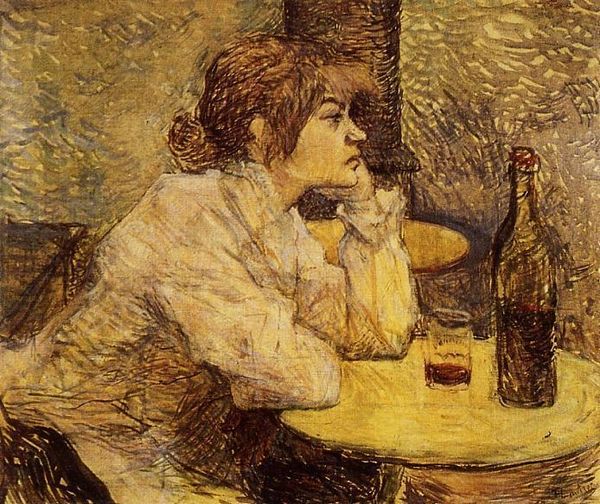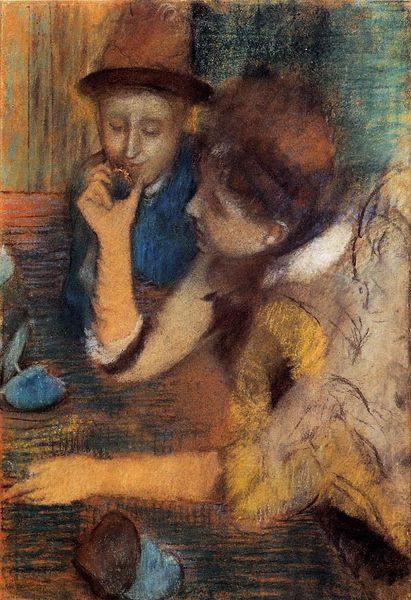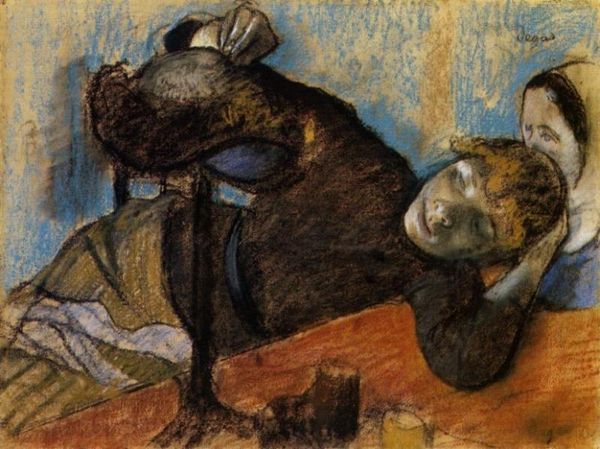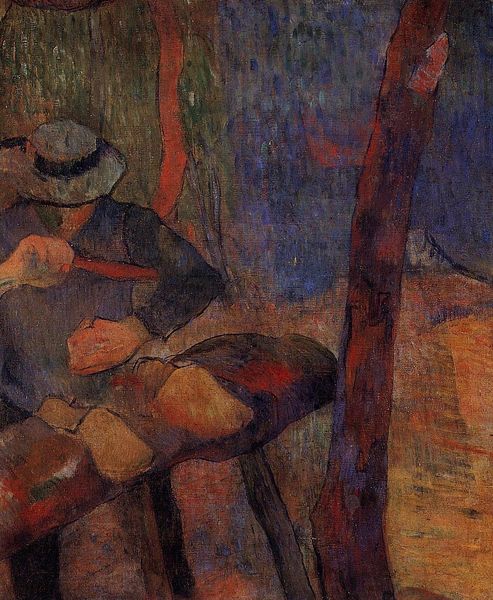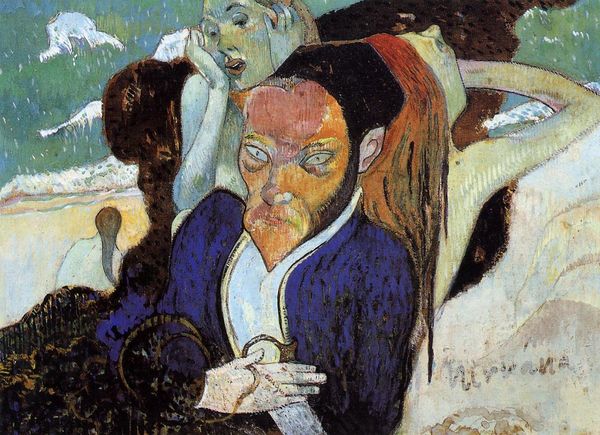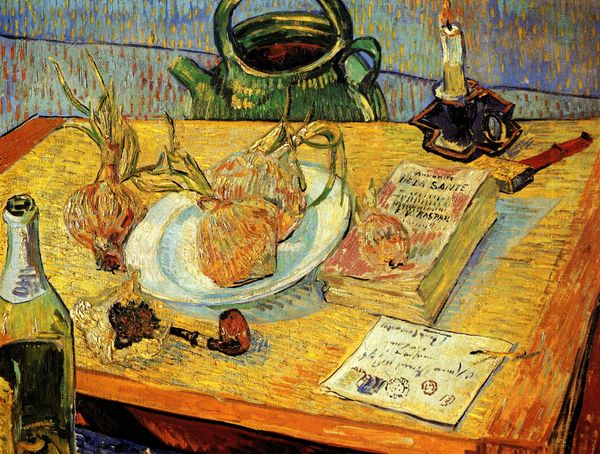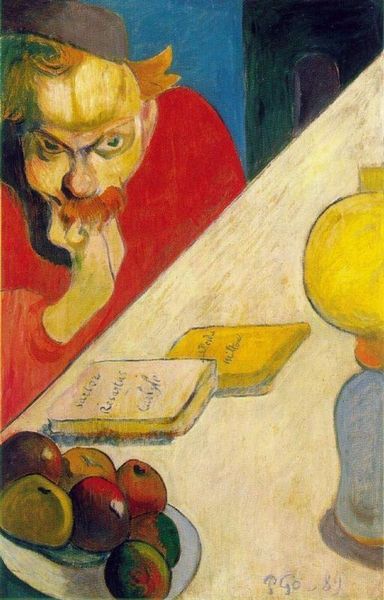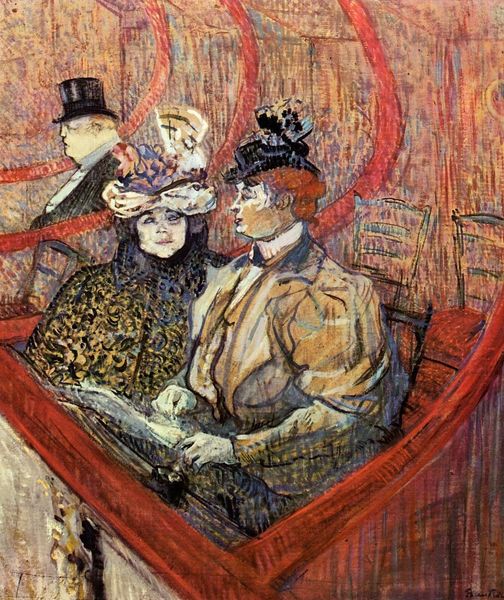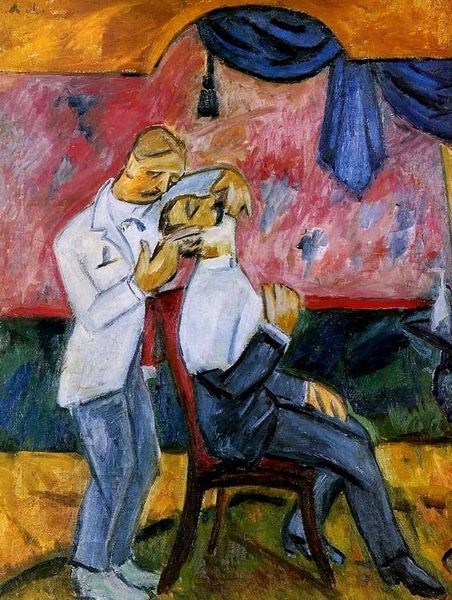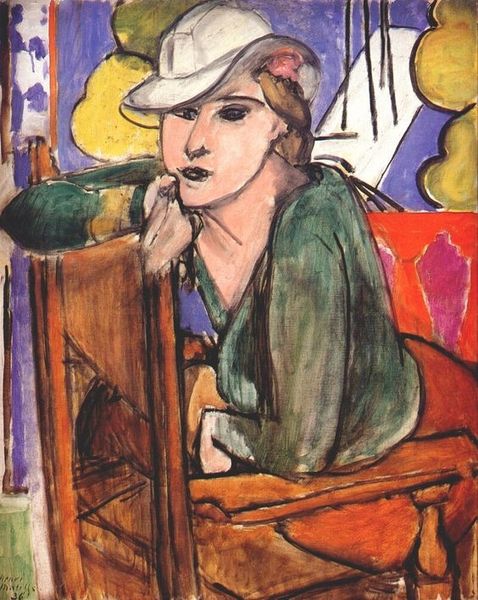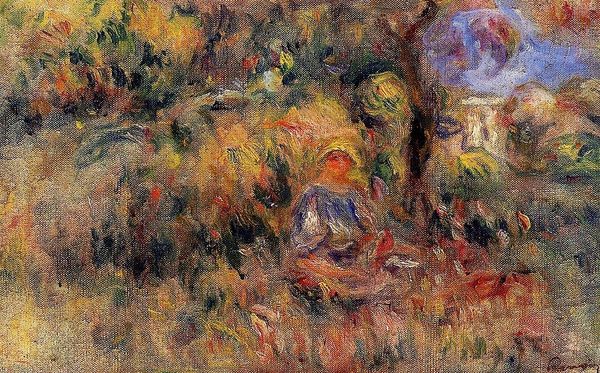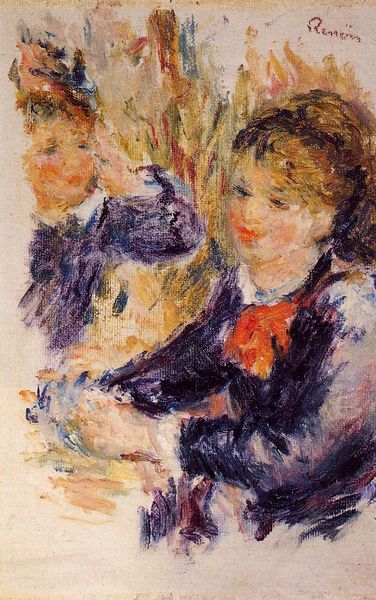
oil-paint
#
portrait
#
impressionism
#
oil-paint
#
figuration
#
oil painting
#
intimism
#
genre-painting
#
modernism
Copyright: Public domain
Curator: Henri de Toulouse-Lautrec crafted this oil painting, "Woman at Her Toilette" in 1889. It’s part of the Intimist movement. Editor: It feels immediately melancholic, doesn't it? The blurred lines, the almost claustrophobic space, the woman's withdrawn gaze…there's a real sense of isolation. Curator: Precisely. It's insightful to view this through a lens of gendered performance. The "toilette," this intimate act of preparing for the gaze of others, becomes a commentary on the pressures and constraints placed on women, especially those in Lautrec's bohemian circles. Her downcast eyes may evoke more than just mere sadness. It could suggest something more severe about being constantly scrutinized within the performative role of a woman on display. Editor: I’m also drawn to the symbols. The mirror reflecting not her literal self, but a shadow of who she may be within society, for whom her identity exists, and who exists only when reflected in a specific frame of societal perception and approval. Consider too, the articles before her—each tool laid out for the ritual. And that distinct red circular stain on the headrest behind her head – a disquieting focal point, like an obscured halo or target. What narrative echoes in our memory might that trigger? Curator: The intimist perspective situates us as viewers within this private moment, making us complicit in the observation. And you're right, those carefully placed objects speak volumes. The brush, the bottles, each contribute to this constructed identity. Editor: But there's something incredibly human here, too. A quiet vulnerability. Lautrec captures this raw intimacy. I'm touched that even an artist of this time seems to acknowledge and display her reality, in opposition to only her representation within society, through those visual elements you drew our attention to. Curator: And Lautrec’s use of color helps amplify that, with its muted, earthy palette suggesting inner turmoil and societal fatigue. Considering art history, that era and subject is primarily viewed through the male gaze, the artist seems sympathetic to the real identity, as opposed to solely an idealistic expectation, from a purely empathetic, intersectional viewpoint. Editor: It’s haunting how the mundane becomes profound, doesn’t it? The symbol becomes a gateway. Curator: Exactly. By recontextualizing everyday routines through the lens of intersectionality, art history grants fresh perspectives on even very popular or typical periods and themes of visual art.
Comments
No comments
Be the first to comment and join the conversation on the ultimate creative platform.
